Hyundai IONIQ 5 vs Kia EV9 – Which car suits you better?
Two cars, one duel: Hyundai IONIQ 5 meets Kia EV9.
Which one wins in performance, efficiency and value for money? Find out now!
Costs and Efficiency:
Price and efficiency are often the first things buyers look at. Here it becomes clear which model has the long-term edge – whether at the pump, the plug, or in purchase price.
Hyundai IONIQ 5 has a distinct advantage in terms of price – it starts at 38500 £, while the Kia EV9 costs 53100 £. That’s a price difference of around 14649 £.
In terms of energy consumption, the advantage goes to the Hyundai IONIQ 5: with 15.60 kWh per 100 km, it’s evident more efficient than the Kia EV9 with 19.50 kWh. That’s a difference of about 3.90 kWh.
As for range, the Hyundai IONIQ 5 performs minimal better – achieving up to 570 km, about 7 km more than the Kia EV9.
Engine and Performance:
Under the bonnet, it becomes clear which model is tuned for sportiness and which one takes the lead when you hit the accelerator.
When it comes to engine power, the Hyundai IONIQ 5 has a evident edge – offering 650 HP compared to 508 HP. That’s roughly 142 HP more horsepower.
In acceleration from 0 to 100 km/h, the Hyundai IONIQ 5 is evident quicker – completing the sprint in 3.50 s, while the Kia EV9 takes 4.60 s. That’s about 1.10 s faster.
In terms of top speed, the Hyundai IONIQ 5 performs a bit better – reaching 260 km/h, while the Kia EV9 tops out at 220 km/h. The difference is around 40 km/h.
There’s also a difference in torque: Hyundai IONIQ 5 pulls slight stronger with 770 Nm compared to 740 Nm. That’s about 30 Nm difference.
Space and Everyday Use:
Whether family car or daily driver – which one offers more room, flexibility and comfort?
Seats: Kia EV9 offers evident more seating capacity – 7 vs 5.
In curb weight, Hyundai IONIQ 5 is distinct lighter – 1955 kg compared to 2392 kg. The difference is around 437 kg.
In terms of boot space, the Hyundai IONIQ 5 offers noticeable more room – 520 L compared to 333 L. That’s a difference of about 187 L.
In maximum load capacity, the Kia EV9 performs noticeable better – up to 2393 L, which is about 813 L more than the Hyundai IONIQ 5.
When it comes to payload, Kia EV9 somewhat takes the win – 615 kg compared to 530 kg. That’s a difference of about 85 kg.
Who comes out on top?
Overall, the Hyundai IONIQ 5 shows itself to be leaves the rival little chance and secures the title of DriveDuel Champion.
It convinces with the more balanced overall package and proves to be the more versatile choice for everyday use.
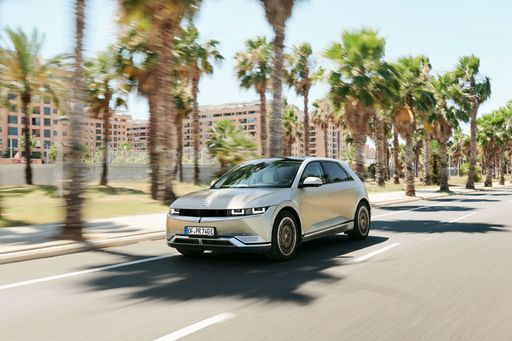
Hyundai IONIQ 5
Hyundai IONIQ 5
The Hyundai IONIQ 5 showcases a bold and futuristic design that captures attention with its striking facade and sharp lines. This electric vehicle offers an impressive blend of performance and efficiency, making it a compelling choice for environmentally conscious drivers. Inside, the spacious and tech-forward interior provides a comfortable and engaging driving experience for both driver and passengers.
details @ hyundai.news
@ hyundai.news
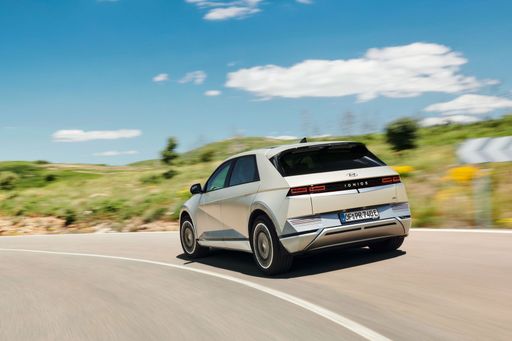 @ hyundai.news
@ hyundai.news
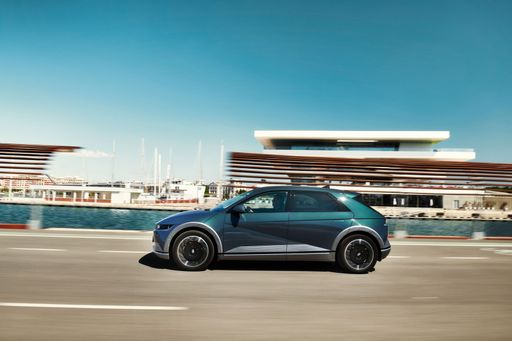 @ hyundai.news
@ hyundai.news
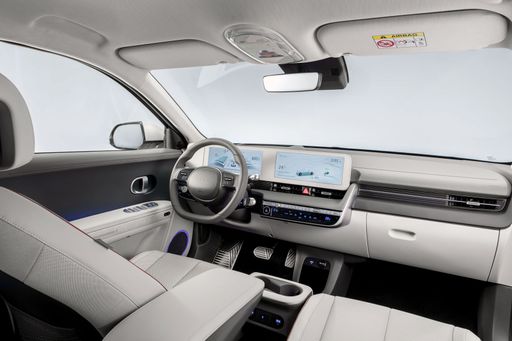 @ hyundai.news
@ hyundai.news
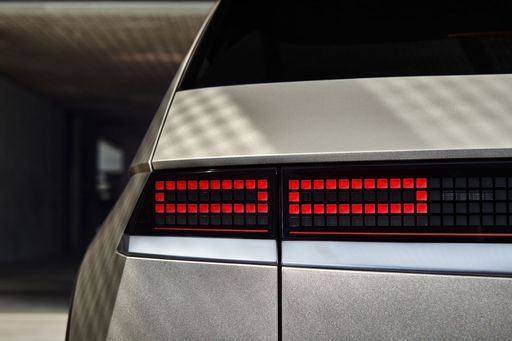 @ hyundai.news
@ hyundai.news
Kia EV9
The Kia EV9 represents a bold step forward in the automotive world with its distinctive design and futuristic appeal. This all-electric SUV promises to provide a spacious and comfortable cabin experience, making it ideal for families and long journeys. With its emphasis on sustainability and advanced technology, the EV9 aims to redefine the standards for electric vehicles in its category.
details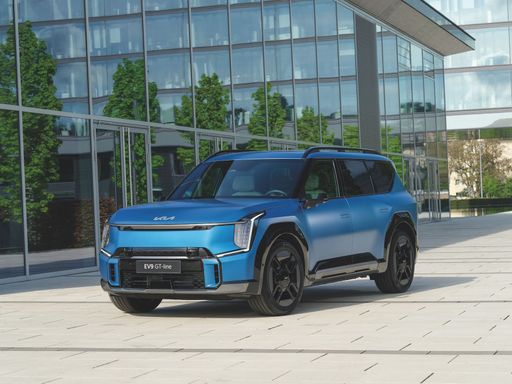 @ press.kia.com
@ press.kia.com
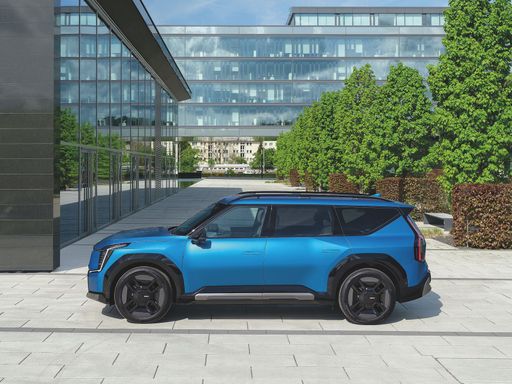 @ press.kia.com
@ press.kia.com
 @ press.kia.com
@ press.kia.com
 @ press.kia.com
@ press.kia.com
 @ press.kia.com
@ press.kia.com

|

|
|
|
|
Costs and Consumption |
|
|---|---|
|
Price
38500 - 64200 £
|
Price
53100 - 78000 £
|
|
Consumption L/100km
-
|
Consumption L/100km
-
|
|
Consumption kWh/100km
15.6 - 21.2 kWh
|
Consumption kWh/100km
19.5 - 22.8 kWh
|
|
Electric Range
440 - 570 km
|
Electric Range
443 - 563 km
|
|
Battery Capacity
63 - 84 kWh
|
Battery Capacity
76.1 - 99.8 kWh
|
|
co2
0 g/km
|
co2
0 g/km
|
|
Fuel tank capacity
-
|
Fuel tank capacity
-
|
Dimensions and Body |
|
|---|---|
|
Body Type
SUV
|
Body Type
SUV
|
|
Seats
5
|
Seats
6 - 7
|
|
Doors
5
|
Doors
5
|
|
Curb weight
1955 - 2275 kg
|
Curb weight
2392 - 2664 kg
|
|
Trunk capacity
480 - 520 L
|
Trunk capacity
333 L
|
|
Length
4655 - 4715 mm
|
Length
5010 - 5015 mm
|
|
Width
1890 - 1940 mm
|
Width
1980 mm
|
|
Height
1585 - 1605 mm
|
Height
1755 - 1780 mm
|
|
Max trunk capacity
1540 - 1580 L
|
Max trunk capacity
2318 - 2393 L
|
|
Payload
385 - 530 kg
|
Payload
542 - 615 kg
|
Engine and Performance |
|
|---|---|
|
Engine Type
Electric
|
Engine Type
Electric
|
|
Transmission
Automatic
|
Transmission
Automatic
|
|
Transmission Detail
Reduction Gearbox
|
Transmission Detail
Reduction Gearbox
|
|
Drive Type
Rear-Wheel Drive, All-Wheel Drive
|
Drive Type
All-Wheel Drive, Rear-Wheel Drive
|
|
Power HP
170 - 650 HP
|
Power HP
204 - 508 HP
|
|
Acceleration 0-100km/h
3.5 - 8.5 s
|
Acceleration 0-100km/h
4.6 - 9.4 s
|
|
Max Speed
185 - 260 km/h
|
Max Speed
185 - 220 km/h
|
|
Torque
350 - 770 Nm
|
Torque
350 - 740 Nm
|
|
Number of Cylinders
-
|
Number of Cylinders
-
|
|
Power kW
125 - 478 kW
|
Power kW
150 - 374 kW
|
|
Engine capacity
-
|
Engine capacity
-
|
General |
|
|---|---|
|
Model Year
2024
|
Model Year
2023 - 2025
|
|
CO2 Efficiency Class
A
|
CO2 Efficiency Class
A
|
|
Brand
Hyundai
|
Brand
Kia
|
What drive types are available for the Hyundai IONIQ 5?
The Hyundai IONIQ 5 is available as Rear-Wheel Drive or All-Wheel Drive.
The prices and data displayed are estimates based on German list prices and may vary by country. This information is not legally binding.
